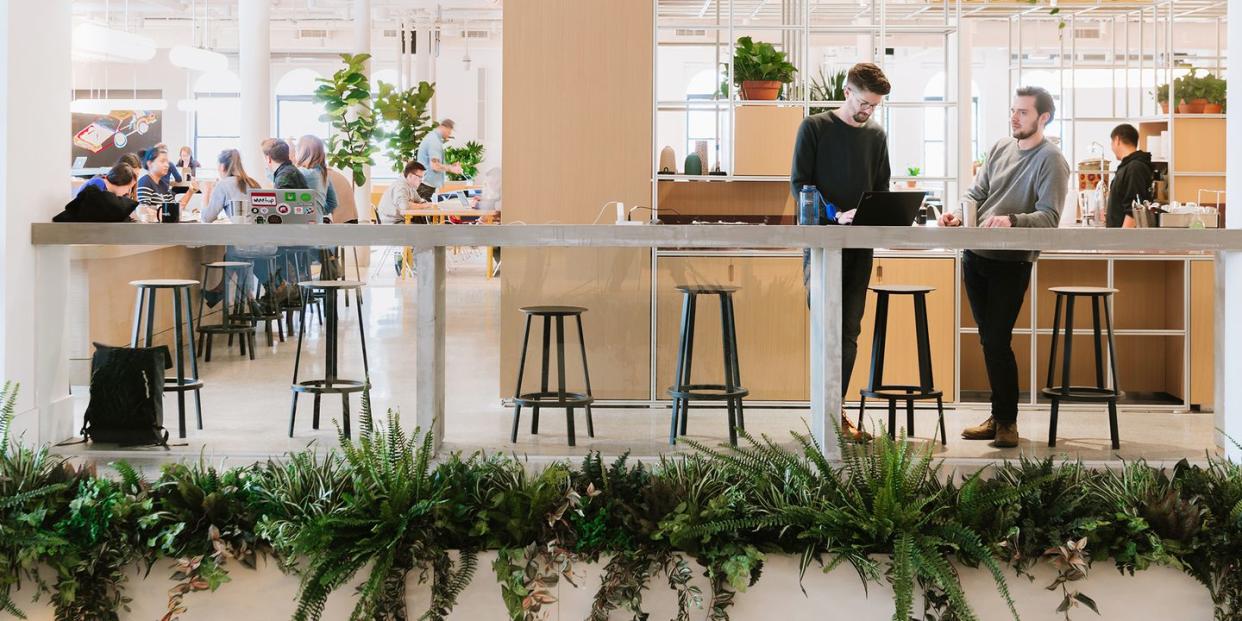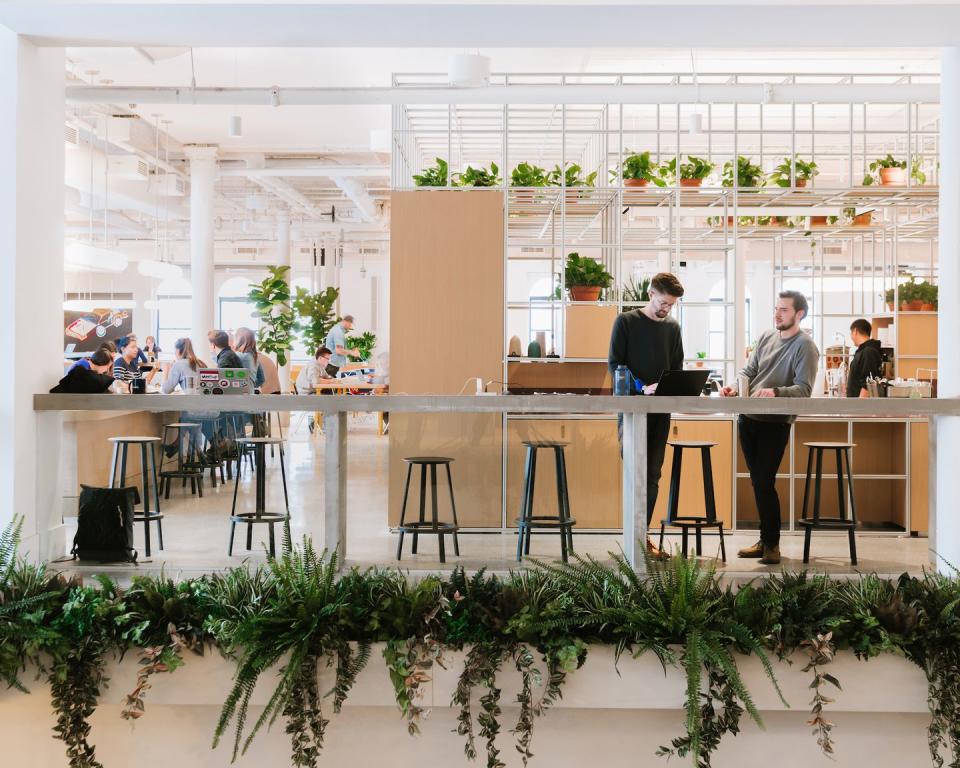This Is How Some Of The World's Most Productive Offices Are Designed

If you've walked through a major city in the U.S., there's a good chance you've passed by a WeWork sign or seen its "Do What You Love" flag hanging from a building. The company just surpassed JP Morgan as the largest occupier of office space in Manhattan, and there are more than 450 offices that have popped up across the country. With each new one, the brand challenges the idea of the traditional workplace. They're shared workspaces anyone can book, and as Instagram-worthy as they are, they're going beyond a pretty aesthetic. The company mission is to "create a world where people work to make a life, not just a living," and, frankly, they're doing a damn good job.
Taking a glimpse into the future of office design, HouseBeautiful.com spoke with Chelsea Kreielsheimer, WeWork's lighting design lead. "What's considered a productive working environment has changed drastically in the past few years," says Chelsea. With a background in healthcare design, Chelsea's job is to create spaces that not only look beautiful, but benefit workers' wellbeing.
WeWork has been so successful in understanding what employees need to thrive, in fact, that they now have a client-facing business called Enterprise. A subset of WeWork, Enterprise works with different companies to design their workspaces. "As more and more companies begin to understand the correlation between workspace and engagement, more than 1,000 people are turning to WeWork for these solutions," explains Chelsea, who focuses on light solutions for Enterprise. Here, she shares some of the secrets to these well-engaged, happy offices.

Plants in traditional offices aren't really standard, but WeWork has a ton of greenery. Why is that important?
WeWork is really focused on sustainability and health in the workplace, and plants are a huge part of that, both real and fake. I think that something that's really missing from offices right now is access to the outdoors. I think that people are spending more time at work, and less time outside, and [plants] give people a feel of the outside. Plants can also help filter the air and provide a lot of benefits; they're good for improving the mood but also health.
You focus specifically on lighting. How does that play into office productivity?
Proper lighting in workspaces are crucial to keep engaged in your work without distracting you or straining your eyes. Both overly lit and poorly lit spaces can cause you to strain your eyes, which can cause headaches. The most important thing for lighting your office is to illuminate the vertical spaces in the space, which will give character but also allows for your eyes to rest on something other than your computer screen. Then, illuminate the top surface where you do your work. Whether that be your desk or elsewhere, having some kind of sconce or table lamp that highlights your desk surface.
Not a lot of offices have desk lamps. Why is that important?
The obvious is so that you can see what you're working on and not casting a shadow. A big issue with workspaces is that you're getting all of your light from overhead, so you're casting a shadow onto your desk and straining your eyes. Having a more focused light fixture near your work surface is going to help mitigate the shadows and allow for better focus on your work and won't strain your eyes. People think that working with ceiling lighting is the most important thing, and that's actually not true. The most important thing is [creating] layers of light [using the vertical lighting and properly lighting your work surface].
I feel like people would consider overhead lighting a necessity. It's not?
No, you definitely don't need overhead lighting. It's not a requirement by any means. It doesn't feel good to have all of this light shining down on you overhead; you want to spread that throughout. The best way to do that is to illuminate the walls, especially if your walls are white, since you won't have to use as much to light up the space.
Are there any paint colors you'd avoid for walls in an office space?
The darker that you paint the walls, the smaller the space will seem. Keep it light, with a white, off-white, light blue, or light grey. Keeping the tone in your office light will help the space breathe, keep it airy, and help it feel bigger.
Follow House Beautiful on Instagram.
('You Might Also Like',)

